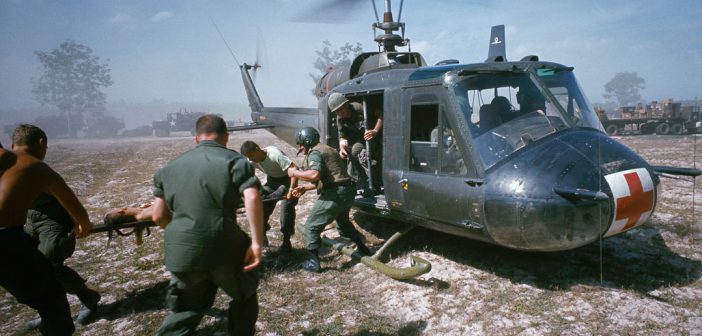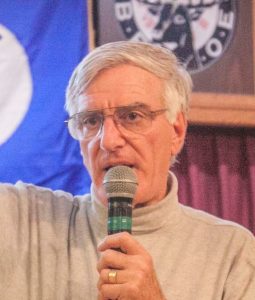 Gramps was especially honored to have Marc Liebman as our January speaker. Marc was an experienced search and rescue pilot who served in Vietnam, the tanker wars of the 1980s and the Desert Shield/ Desert Storm conflicts. He and his crews saved the lives of 29 men in battle. He served three decades with 3800 Navy flight hours and retired as a captain in 1993.
Gramps was especially honored to have Marc Liebman as our January speaker. Marc was an experienced search and rescue pilot who served in Vietnam, the tanker wars of the 1980s and the Desert Shield/ Desert Storm conflicts. He and his crews saved the lives of 29 men in battle. He served three decades with 3800 Navy flight hours and retired as a captain in 1993.
He discussed the marginal helicopters that they were using at the beginning: the HH-2C Sea Sprite that was extremely under-powered and had limited endurance. Since it was armed with a mini-gun, it had ammunition containers in the cabin that limited the available room. Things got better with the HH-3Sea King but nowhere good enough. The H2 mini-gun would fire if the helicopter made a hard landing on the ship; that did not make the ship’s crew smile at all.
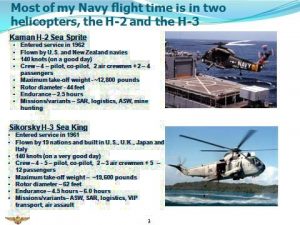 Operations on board ships were touchy with wind, the ship’s rolling and the ship’s change of direction as challenges. There was only six feet of rotor clearance available to handle all these problems! Due to weight and other considerations, the helicopters would lift off the ship and immediately drop to near sea level to gain speed for translational lift and ground effect for several miles: indeed not a comfortable operation. They did use inflight refueling to avoid landing with the helicopter hovering and a hose lifted from the ship to pump fuel aboard. Their missions could last 2 hours in the H2 or 4 hours H3 unrefueled. On one occasion Marc had a tailhook attached and made a carrier approach, calling the ball and landed the helicopter on the carrier deck at the third wire.
Operations on board ships were touchy with wind, the ship’s rolling and the ship’s change of direction as challenges. There was only six feet of rotor clearance available to handle all these problems! Due to weight and other considerations, the helicopters would lift off the ship and immediately drop to near sea level to gain speed for translational lift and ground effect for several miles: indeed not a comfortable operation. They did use inflight refueling to avoid landing with the helicopter hovering and a hose lifted from the ship to pump fuel aboard. Their missions could last 2 hours in the H2 or 4 hours H3 unrefueled. On one occasion Marc had a tailhook attached and made a carrier approach, calling the ball and landed the helicopter on the carrier deck at the third wire.
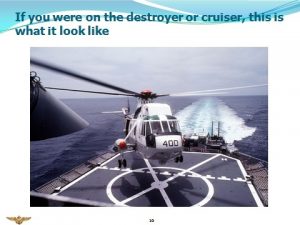 In Viet Nam in the Navy service, they flew at about 200 feet above the water and about a mile from shore as a way to evade the larger weapons that could not aim that low and were exposed only to smaller arms fire. When a pilot was forced to eject, there was an audible alarm transmitted that stopped all conversation and turned all to the rescue mode. The rule of engagement was to never cross the beach. The USAF landed on shore and had a much higher loss rate of aircraft and personnel. Despite the rules of engagement (ROE), the Navy SAR made 29 of their rescues over North Viet Nam. The Navy made 50 percent of their rescues under enemy fire and had much better results than the USAF.
In Viet Nam in the Navy service, they flew at about 200 feet above the water and about a mile from shore as a way to evade the larger weapons that could not aim that low and were exposed only to smaller arms fire. When a pilot was forced to eject, there was an audible alarm transmitted that stopped all conversation and turned all to the rescue mode. The rule of engagement was to never cross the beach. The USAF landed on shore and had a much higher loss rate of aircraft and personnel. Despite the rules of engagement (ROE), the Navy SAR made 29 of their rescues over North Viet Nam. The Navy made 50 percent of their rescues under enemy fire and had much better results than the USAF.
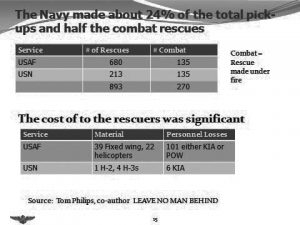 He described the Ho Chi Minh trail in detail. It was a very complex and sophisticated route from North Vietnam and China that was used to supply their troops in South Vietnam. On one occasion a U.S. pilot was shot down in the Haiphong Harbor area. There was fire from a Russian ship but the M-79 and the mini-gun allowed them to make the rescue despite the violation of the ROE. Liebman was confined to quarters for a week as a result but the pilot survived! We are extremely grateful to Marc Liebman for his risk taking and thus success in rescuing our downed comrades. We are grateful for his presentation to GPS and for the books he has written to disclose the realities of the Vietnam War.
He described the Ho Chi Minh trail in detail. It was a very complex and sophisticated route from North Vietnam and China that was used to supply their troops in South Vietnam. On one occasion a U.S. pilot was shot down in the Haiphong Harbor area. There was fire from a Russian ship but the M-79 and the mini-gun allowed them to make the rescue despite the violation of the ROE. Liebman was confined to quarters for a week as a result but the pilot survived! We are extremely grateful to Marc Liebman for his risk taking and thus success in rescuing our downed comrades. We are grateful for his presentation to GPS and for the books he has written to disclose the realities of the Vietnam War.

